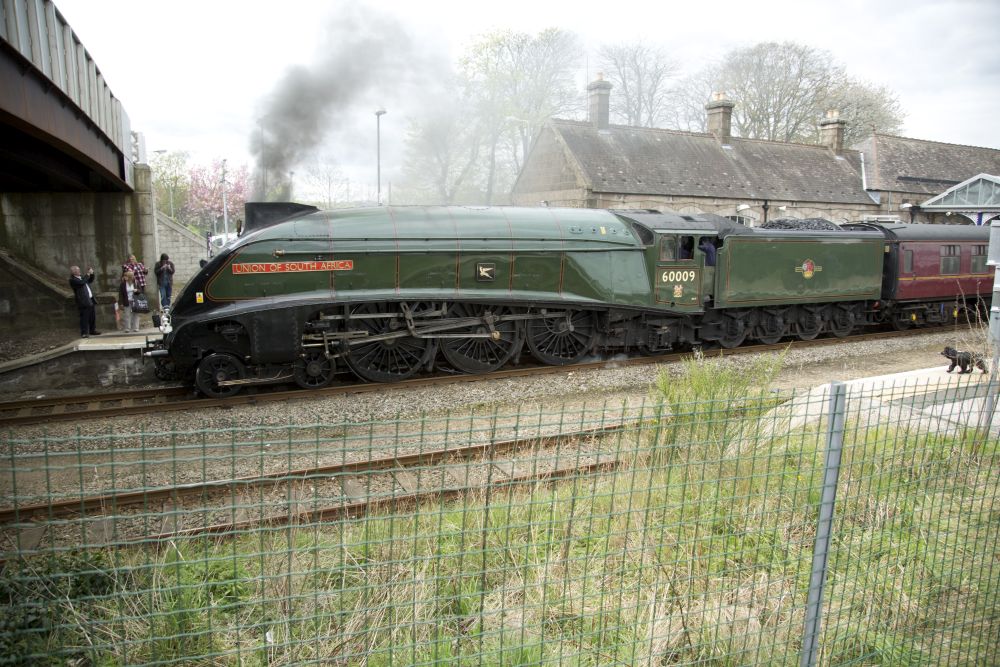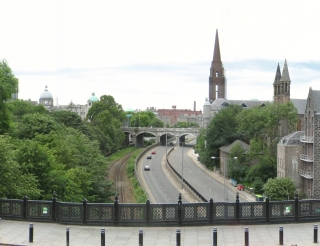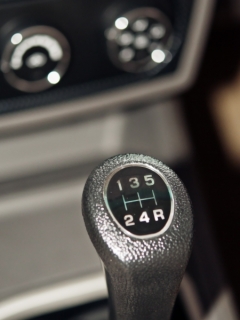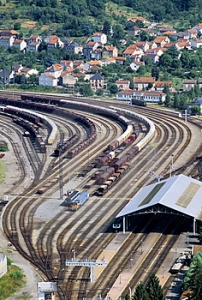Elaine Pirie is involved with numerous issues concerning animal welfare, more often than not centring on canines. Her dogged determination across a host of initiatives and issues is impressive. By Suzanne Kelly.
 Elaine and I meet appropriately at BrewDog; she arrives with two marvellous rescued pooches, which are well received. Her knowledge of dogs is only surpassed by her clear passion for them. She is involved and has been for many years with charities, campaigns, welfare issues. After we yapped for a while, several themes, issues and organisations came to the fore.
Elaine and I meet appropriately at BrewDog; she arrives with two marvellous rescued pooches, which are well received. Her knowledge of dogs is only surpassed by her clear passion for them. She is involved and has been for many years with charities, campaigns, welfare issues. After we yapped for a while, several themes, issues and organisations came to the fore.
The Dog Walkers Association:
Aberdeen Dog Walkers Association is a collective of dog walking professionals who seek to implement standards of care, in order to safeguard the well-being of dogs, and let pet owners know what service and level of care they should be getting when entrusting a beloved animal to a relative stranger. Elaine has been involved with Pamela Rutherford to get the association up and running.
Elaine said:
“We have also recently been contacted by another group, the Scottish Dog Walkers Association and we hope to really get things moving now with their help and involvement. Pamela also runs the Pets Info North east Facebook page.”
More can be learnt about this organisation, events, shows, talks and more here.
Walking The Dog:
People who can’t leave work, people with health or mobility problems, busy people need to know they can rely on a professional, reliable dog walker to take care of their pet when they can’t do so. Elaine told me about the Aberdeen Dog Walkers Association, which has a code of ethics for dog walkers.
This includes any van having separate crates/kennels/spaces for individual dogs should a walker take out more than one animal at a time. Elaine explained an unfortunate story of a weak dog left in the back of a van with other dogs. The outcome was fatal. If you are going to use a service, make certain they are insured at the very least; dog walkers in this scheme will not take more than 6 dogs out at a time, and will look after their welfare.
As an aside, walking your dog should be a chance for you and your pet to enjoy each other’s company, to exercise, to spend time together. When a dog wants to stop and sniff something, why not let it do so. When a dog is doing its business, wait patiently until it has finished – don’t start dragging it away. And by all means, obey the law and clean up after your dog.
Don’t leave your dog alone in a vehicle:
Elaine is among other things a professional dog walker, and while you might think that must be a simple thing to do, it requires knowledge and attention to detail as well as an overriding dedication to animal welfare. (I mentioned a tragic case from Canada – a dog walker who would take multiple dogs for walks reported them stolen one day. After a while she confessed: she forgot about her charges, left them in her van – and as dogs do in vehicles which may not seem hot to you – all of them died).
 Like so many other people, she was only going to leave the dogs for a little bit of time: she got involved with other things; she forgot them. She didn’t think it was too hot: it was for animals that do not sweat and therefore can’t cool down any car, however comfortable to you or to me, can be a killer.
Like so many other people, she was only going to leave the dogs for a little bit of time: she got involved with other things; she forgot them. She didn’t think it was too hot: it was for animals that do not sweat and therefore can’t cool down any car, however comfortable to you or to me, can be a killer.
She didn’t think a few minutes (which turned into a few hours) could do any harm.
Every person who winds up killing their pet dog when it dies in a car has the same story.
This is one of the reasons that the Scottish SPCA has issued the advice: do not leave your dog alone in a car, truck or van. End of. There is another worrying reason not to leave your dog unattended in public, a reason that is increasing in frequency.
Dog theft:
Elaine and I discussed many anecdotes, including the guide dog ‘Tess’ which ‘went missing’ in Nairn. Coincidentally, a leading animal charity informed me that at the same time in the same area, 3 horses were stolen.
Dog thefts are a reality and they are increasingly frequent. In our area, dogs have mysteriously disappeared from back gardens (police theorise the garden gates weren’t shut or the dogs opened them – claims owners disagree with). The Police did issue a warning about thefts of dogs tied up in front of stores, malls and supermarkets. Tess is a curly coated black retriever and is micro chipped.
If she just went missing, she will still have her guide dog collar and harness on. If you see the dog or have any ideas where she might be, call 0800 6888 409.
On Aberdeen Beach a man was letting his dog run around without being on a lead; a stranger appeared from a sand dune, and started waving food at the dog; the dog went for it.
When the owner finally got to the scene, the stranger was trying to take the dog, using the excuse he somehow thought it was his dog. The owner got a description of the man who quickly made off. Going to the local police, you might have thought there would have been an investigation or even a report made. The police told the owner since nothing was stolen, they were not interested.
If anyone knows anything about animal theft, please get in touch with the Scottish SPCA on 03000 999 999 – and do let Aberdeen Voice know as well.
Lost or stolen dog? Act immediately:
If you lose your dog – let’s hope it’s not been stolen, and let’s hope it is micro chipped – call your vet and local vets, and let them know. I found a dog a month ago at the Cove Bay roundabout; while I put details of it on the Lost and Found pets Aberdeen City and Shire Facebook page, my colleague called the two nearest vets: one of them had just been called by the frantic owners.
Dog and owners were soon reunited. Micro chipping does help reunite lost pets and owners. Leave flyers in the area where the animal went missing; conduct thorough searches – cats especially wander into buildings/sheds which are then locked behind them.
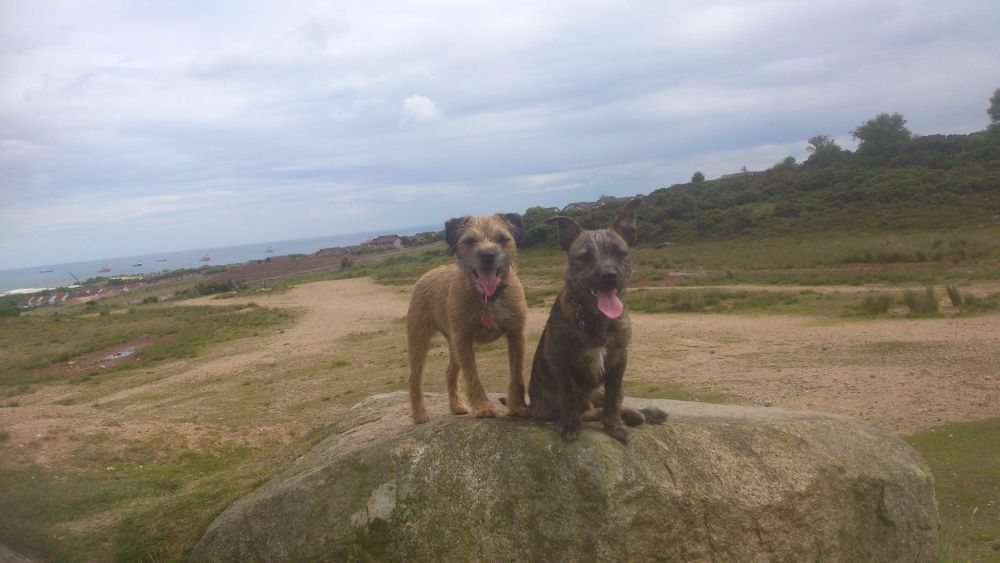 Stolen pets wind up in a variety of situations –some are used for breeding – and illegal puppy mills mean money for unscrupulous people and lots of suffering for bitches and puppies. Exhausted, badly treated bitches are kept pregnant; the pups are sold as soon as they can be for large sums in some cases.
Stolen pets wind up in a variety of situations –some are used for breeding – and illegal puppy mills mean money for unscrupulous people and lots of suffering for bitches and puppies. Exhausted, badly treated bitches are kept pregnant; the pups are sold as soon as they can be for large sums in some cases.
Some stolen animals are sold on websites such as Gum tree (which should know better, but that’s another story).
And some have a far worse fate.
If you see any lost or stray animals, try and rescue them if you can do so safely. If not, call the Scottish SPCA. Animals are being abandoned by people who simply get tired of them, who have no idea how to cope with illnesses or behaviour issues, or who have problems continuing to afford pets.
There is no excuse for dumping a pet at a roadside, in a box, in a park: domestic animals do not fend for themselves; they will be cold, hungry and frightened – and nothing good can come of it. Call someone to get help with your problems – don’t make your pet suffer for your lack of ability to cope.
Help is again available from many sources; start with some of the Facebook links in this article, or call the Scottish SPCA. Do not leave your animal alone to fend for itself.
Dog Fighting:
Dog fighting is real, it is increasing, and it happens in Aberdeen city and shire.
Dog fighting is – obviously barbaric and illegal. It is also a means for some dangerous, cruel people to make a quick bit of money. The dogs are forced to fight against their nature by torture. They are forced to exercise until they drop; bitches are used for breeding and then discarded / killed when exhausted. Smaller dogs, cats and other animals are fed to starved would-be fighting dogs to give them a blood lust.
A woman approached a man in Kincorth some years back; he had been walking a Staffordshire pit bull terrier. She told him he could make good money by fighting his dog. An anti dog-fighting campaign led to a tip off that dog fighting not only takes place in ‘the Gramps’ in Aberdeen, but indoors in parts of Torry.
If you know anything and do nothing about it, you are guilty of serious cruelty. If you think dogs like to fight, they most definitely do not. If you hear any dogs or animals crying in pain anywhere, please call the Scottish SPCA.
To avoid your animal getting caught up in this horrendous crime, do not leave them alone in public, get them micro chipped, keep an eye on cats, and report any suspicious activities.
Let’s not forget that a few years ago, two men in the north part of the city held down a girl’s pet cat, and encouraged a dog with them to savage it. Let’s not forget that a dead dog was found inside a suitcase in Torry which had been badly treated and starved. Let’s not forget that a dog with injuries was found in the city.
they want to and need to fit into your family to be well adjusted
It would be nice if the police led the way with an awareness campaign, but that’s not happening. If you want to distribute flyers in your area, get in touch with Aberdeen Voice, and we will send you some.
And if you want a pet? Please don’t contribute to the suffering involved in puppy mills; please take an animal that is already here – adopt.
Dog Rescue Charities:
Elaine Pirie supports and volunteers with ‘Friends of Bianca’ a Portuguese charity caring for and rehoming strays. Strays are a huge problem the world over; Elaine’s advice for every pet owner? ‘Fix your dog!’ Neutering your animal can help the growing problem of strays.
Elaine’s charity in Portugal is careful about rehoming animals, but she is concerned that so many foreign dog rehoming charities do no follow up. In fact, Elaine advises that many dogs rescued from overseas charities wind up unwanted and abandoned in the UK.
“People receive animals from abroad and then are dumping them here – or are not given a support network in the UK.”
The idea of owning a dog (or any pet for that matter) may be appealing – but if you don’t have the time and patience to make sure it is well trained, that you will feed it adequate portions of dog food, that you will exercise it and make it part of your family, then don’t get one. Dogs are pack animals; they want to and need to fit into your family to be well adjusted.
Studies have shown that dogs left along for long periods of time in a house spend most of that time by the door, awaiting the return of the owner.
If you are one of those people who think that you get a dog, chain it in your back yard and leave it alone, please think twice about doing anything so cruel and, well, nasty. Why get one if you don’t want to be with it? The Scottish SPCA is constantly rescuing neglected animals who are treated this way; again if you know of a dog which is neglected, underfed, badly treated, the Scottish SPCA wants to know about it.
Training:
Dogs require patient, kind and consistent training. There is never, ever a need to hit any animal. Your tone of voice, your commands will be all that a dog needs to know it has behaved badly – if you use one of the area’s excellent dog training services.
We unfortunately have a problem of people owning dogs, often status symbol powerful breeds, which have no idea how to control or train them: the many stories of children and adults mauled by dogs will often have bad training at the root.
This is not training; this is cruel bullying
We also have cases of dogs attacking other dogs in Aberdeen city parks. Guide dogs have even been attacked.
Avoid gimmicky trainers. The so-called ‘Mexican dog whisperer’ has been outed: he uses cruel electric shocks and spike chokers to get his ‘magical results’. The electrical shock devices are the same thing used by dog fighting gangs to get the dogs to attack other dogs.
The spike chokers consist of having two metal rods jab your dog in their throat every time you pull the leash. Neither item has any purpose other than to hurt and make a dog obey out of pain and fear. This is not training; this is cruel bullying. Campaigns are being waged to stop the sale of all such torture devices.
But enough of the bad stuff, back to the happy side of having a dog.
Dog Events:
Having a dog might be work – but it is also potentially a great way to have fun and keep fit. There are many charity walks, obedience competitions and dog and owner days out to be found in the city and shire. Next month there will be a fly ball event in Seaton Park. Dogs train to jump over hurdles and retrieve balls; it’s competitive – but the emphasis is on fun.
Friends of Bianca (a registered Scottish Charity) will have a fun walk on 28 September From Westburn Park on the Deeside Railway line.
Pet Information North East is another resource for information about dogs, dog-related events and talks, and to communicate with other dog owners.
Elaine’s two dogs are ready for home; another dog has entered BrewDog, and the excitement is just too much for this pair. Elaine takes her leave.
- Comments enabled – see comments box below. Note, all comments will be moderated.
[Aberdeen Voice accepts and welcomes contributions from all sides/angles pertaining to any issue. Views and opinions expressed in any article are entirely those of the writer/contributor, and inclusion in our publication does not constitute support or endorsement of these by Aberdeen Voice as an organisation or any of its team members.]







